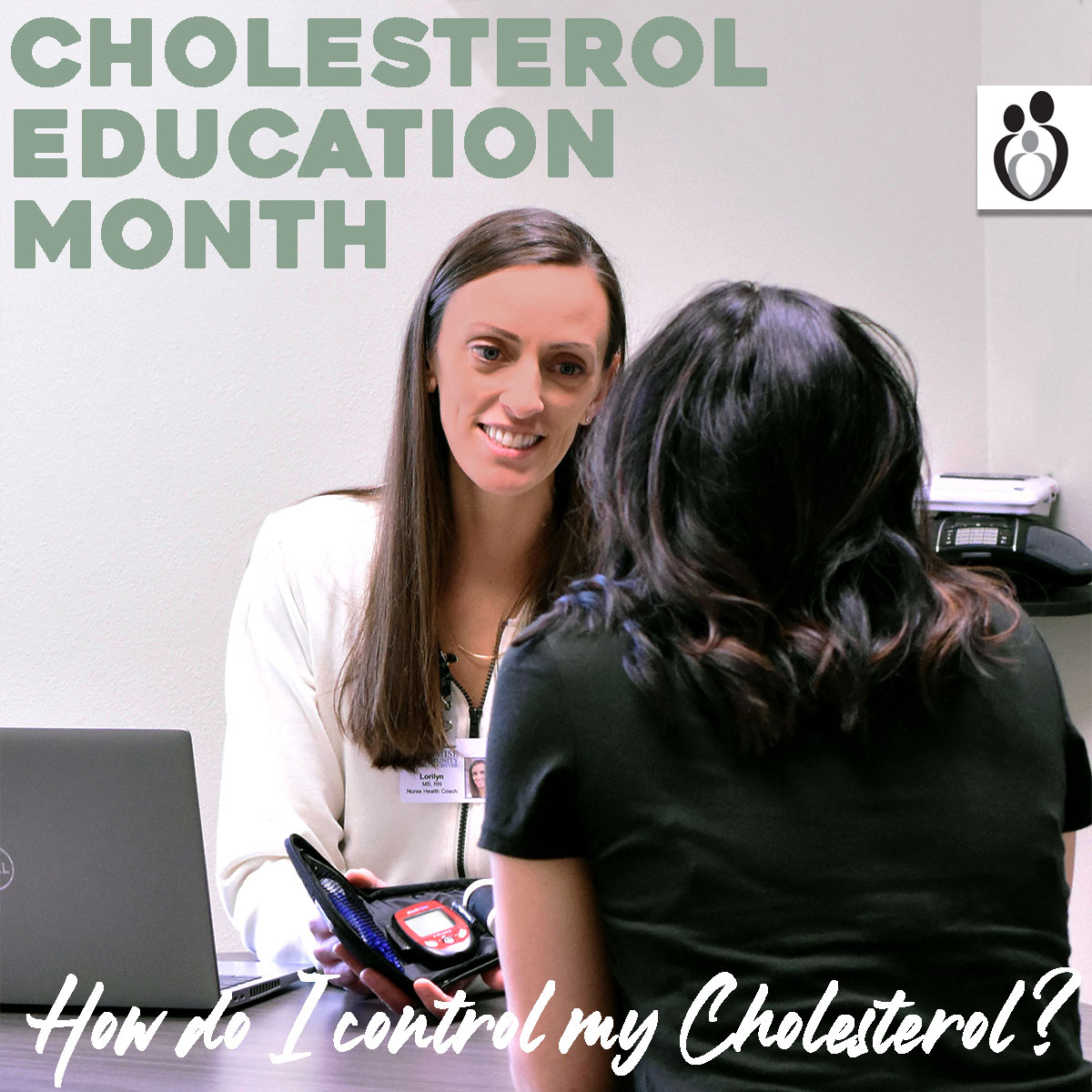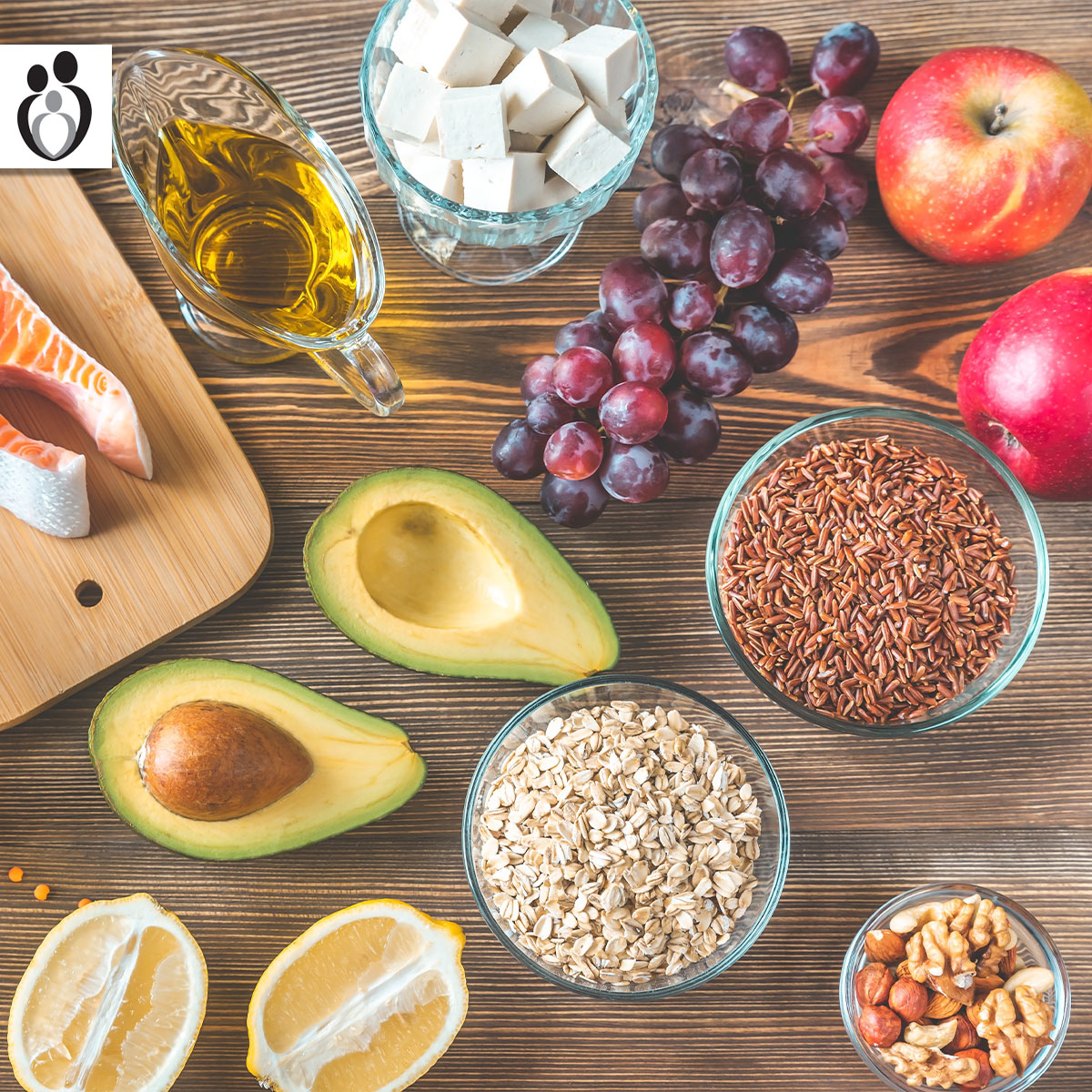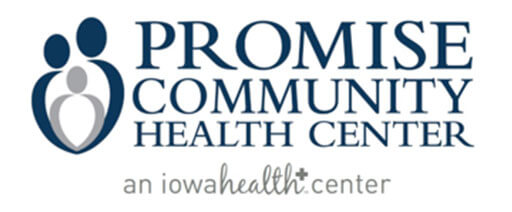
Happy Cholesterol Education Month! This month our Population Health Team has written two educational articles to explain what Cholesterol is and what steps you can take to keep it under control.
Cholesterol numbers are a key part of a formula used to assess risk of a cardiovascular event such as heart attack, coronary heart disease, death or stroke. Other factors used to assess risk include blood pressure, sex, race, history of diabetes, and smoking habits.
Now what?
In order to develop a plan, it is important to have all the information. The first step to managing cholesterol is to schedule an appointment with your primary care provider. The current recommendation for both men and women is to begin screening for cholesterol at age 20 every 4-6 years. For those who have other cardiovascular risk factors such as smoking, diabetes, or a family history of cardiovascular disease, cholesterol may be checked more frequently.
Providers will order a blood test called a lipid panel. This tests measures triglycerides, HDL cholesterol, LDL cholesterol, and total cholesterol. Total cholesterol is a snap shot of your overall cholesterol. The formula is as follows:5
Total cholesterol = HDL + LDL + 20% triglycerides
Lifestyle Management and Prevention
Whether you have high cholesterol (hyperlipidemia) or not, the best thing you can do to manage or maintain healthy cholesterol is through lifestyle. These three main categories are being mindful of the foods we eat, the way we move our body, and our smoking status.
Foods
It was previously understood that foods high in cholesterol had the greatest impact on bodily cholesterol. More recent research has shown that the types of fat and amount of carbohydrates have the greatest effect on cholesterol.

Eat more of these to promote HDL:
- Fish rich in omega-3 fatty acids such as salmon, tuna, and mackerel.
- High-fiber foods: beans/legumes, vegetables, fruits, and whole grains. Water-soluble fiber can help reduce cholesterol and LDL.
- Heart healthy oils such as olive and avocado oils as well as nuts and seeds.
Fill up on fiber to promote HDL
While all fiber is great, soluble fiber is beneficial for helping reduce cholesterol. Soluble fiber becomes like a thick gel in our intestines causing digestion to slow. This slower digestion prevents blood sugars from spiking AND traps fats so they can’t all be absorbed. Excellent sources of soluble fiber include oats, lentils, beans, avocados, carrots, and flax seeds. But, it can be found in all vegetables and fruits in varying amounts.
Limit these to reduce LDL:
- Saturated fats found in whole fat dairy products, coconut oil, and red meat.
- Eat fewer of these to reduce LDL:
- Animal skin, pork belly, fatty meats, and sweets.
- Corn oil and margarine.
- Simple sugars and foods that are high in carbohydrates.

Exercise
Any movement is good movement. The American College of Sports Medicine (ACMS) recommends a minimum of 150 minutes of moderate-intensity aerobic activity every week. This means moving enough to become a little out of breath. Additionally, muscle-strengthening activities are recommended two times a week. This can be body weight exercises, yoga, traditional strength training, and functional fitness training. If exercise is not something you are already doing, beginning with 15-20 minutes a few times a week and building up from there is the best practice to follow.
Quit Smoking
Quitting smoking has a positive effect on HDL cholesterol in less than three weeks. One-year of being smoke free reduces the risk of cardiovascular disease in half!7
Check and Change
If you are ready to learn more about your cholesterol and cardiovascular disease risk, just check and change.
Check – Schedule with your primary care provider to learn about your current cholesterol levels. Promise has providers who are accepting new patients and are skilled at managing cardiovascular health. If you are ready to set up an appointment, call 712-722-1700 to schedule.
Change – Choose 1 or 2 small changes that are beneficial for cholesterol management and add them to your life. Maybe it’s adding in one vegetable a day or taking a 15-minute walk twice a week. Find something that is difficult but doable for you and build on those habits as they become more comfortable. This will make a difference in your quality of life for years to come.

